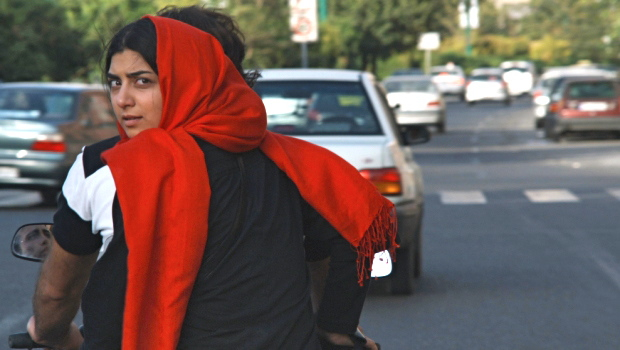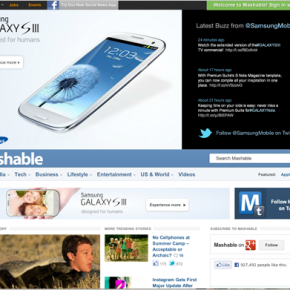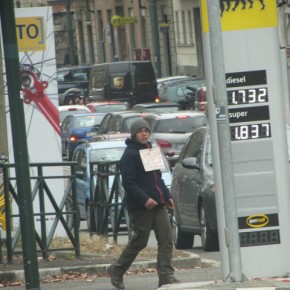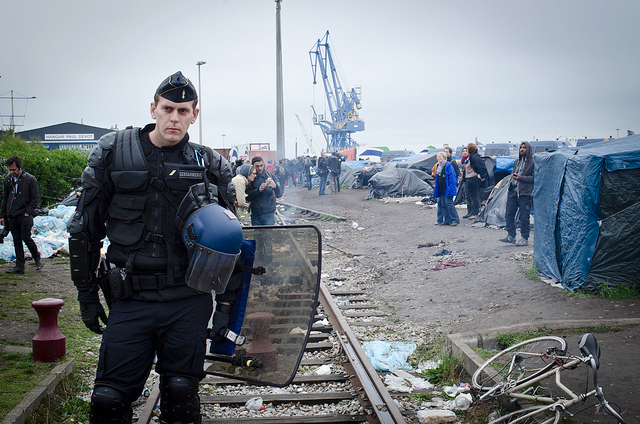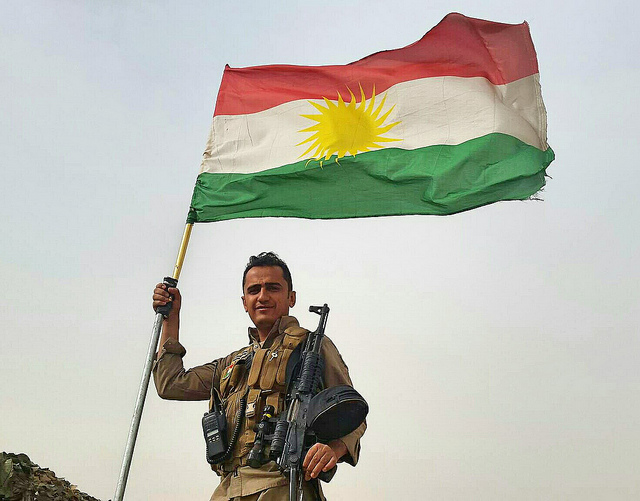In her award-winning film I Am Nasrine, Iranian-American director Tina Gharavi sheds light on the inexorable rise of post-9/11 xenophobia in the United Kingdom. Set in Tehran and northeast England, the film tells the story of teenage siblings Ali and Nasrine, who are sent off to England in hope of securing a better future.
Inspired by true events, including the 2002 murder of Iranian expatriate Peyman Bahmani in Sunderland, the film provides a glimpse into the seamy underbelly of institutionalized racism in western societies.
After winning the award for the Best Original Screenplay at the Brooklyn Film Festival earlier this month, Tina Gharavi sat down with us to discuss the inspiration for I Am Nasrine and the ‘immigrant’ experience.
Shirin: Lets start with a little bit of your background. Where did you grow up?
Tina Gharavi: I grew up in a lot of places. I was born in Tehran in 1972 and moved to England just before the 1979 Iranian Revolution where my dad was doing his PHD. I lived in England from age 6 until I was 10. Then we moved to New Zealand followed by the United States, and France. Eventually, I moved back to England, where I’ve been living for the past 14 years. I feel like I’m a nomad, like there is no place I can actually call home, which is funny since my great grandfather was from the Bakhtiari nomadic tribe in Iran.
Shirin: In your own words what is I Am Nasrine about and what was the inspiration behind it?
TG: It’s a story about a young girl who has to find her strength through adversity, which is a story that a lot of people go through, particularly those who immigrate and have the experience of leaving home and dealing with something traumatic and devastating outside in a foreign country. It is my story. It is a story of a lot of people I know and it is a story that is rather untold.
Shirin: So it’s autobiographical in some way?
TG: Absolutely. There is a lot of ‘me’ in it. You know, because a lot of my work is about documentary and I’ve always tried to find truth in the actors and writing it with them. I guess I am trying to humanize the asylum experience against a backdrop of media hype and misleading reports, such as those disseminated by the Daily Mail, which scapegoat immigrants and stir anti-asylum racism and xenophobia. This, we believe, led to the murder of Peyman Bahmani, the brother of one of the refugees I worked with, in 2002.
Shirin: Have you been a victim of xenophobia yourself?
TG: Of course! Yes. I had a really difficult time growing up in England as a foreigner. I still have a difficult time. Most places aren’t color blind in my experience. It’s a battle that is still being fought to accept people as who they are and to stop making judgments on the color of their skin, or their religion or their sexual orientation. It’s a kind of tribalism, and I think it’s fucking stupid.
Shirin: How long did it take for you to make the film?
I Am Nasrine (Official Trailer) from Bridge+Tunnel on Vimeo.
TG: I shot it in four weeks in northeast England and about two weeks Iran. We then did some reshooting in the northeast for about three days.
Shirin: You started shooting the film in Iran in 2009, only weeks after the uprising against the reelection of Mahmoud Ahmadinejad. How did you manage to shoot the scenes in Iran at such a tumultuous time?
TG: Yes, the protests had kicked off in June and we went and shot it in Tehran while they were all happening around us. We didn’t get into trouble, because the police had its hands full. We also worked with an amazing producer and a fixer who did get permission for another film. We were technically their second unit, so we did have an official permit,which was great because we eventually did get stopped by the police who asked to see the permission. My production assistant said that he was the director, so I stood back and pretended to be more of a bystander. We were actually really excited about the protests, thinking to ourselves that change is finally coming to Iran.
Shirin: How did Sir Ben Kingsley come to be involved in the film?
TG: I was having a meeting at the BBC and we were both in the same waiting room. After a few minutes of not saying anything, I turned to him and say: look, if I don’t talk to you, I’ll kill myself later [laughs.] He was like, “Lets save a life today!” (Kingsley) was so sweet. So I started telling him about my project. He read the script, and offered an endorsement.
Shirin: You showed the film at the House of Parliament in London. How was it received?
TG: It was amazing to be there because I think it was an important platform that helped the film get attention. After that, I was invited by Woman’s Hour by Radio 4 in Britain, which in itself is a good conduit for films to be recognized since it has an audience of around two million.
Shirin: How did you find the reception here in the U.S.?
TG: We loved it. The people really engaged during the Q&A …
Shirin: More than the U.K.?
TG: Yes I think people in the U.S., particularly in New York where the film premiered, are very forthcoming. They are upfront. They speak their mind, whereas in Britain, people are much more reserved. You never know what they actually think…
Shirin: Any plans to screen I Am Nasrine in the Middle East?
TG: We’ve had lots of Middle Eastern film festivals tell us they would love to show the film but they are unable to do so because of the homosexuality.
Shirin: I see, lets talk a little about the casting process. How did you come across Micsha Sadeghi and Shiraz Haq, who play the lead roles of Nasrine and Ali?
TG: We did a big casting in London. We saw about 500 girls and then Micsha came and the moment we saw her, we knew we had found our girl. I liked her because she was a native Iranian, born in Tehran and lived there until moving to Paris in 2006 to study acting. As for the role of Ali (the brother), that was really hard. We tried hard to find an Iranian actor, but none of them wanted to do a gay kiss. And then Shiraz, who is British-Pakistani, came and we decided to go with him. I think it was a good choice because with an Iranian actor, there would always be this fear that he might get in trouble if he decides to go back to Iran.
Shirin: What plans do you have for the film now?
TG: We want to show it in the U.N. headquarters next in New York. Both the British consulate and the British Mission to the U.N. have agreed to sponsor the event. Although we still need one more piece of the puzzle we need a working party in the U.N. to cosponsor the event.
Shirin: Any projects on the horizons?
TG: I am currently making a film set in Iraq’s Kurdistan region called The Woman Who Found Saddam. It’s kind of a thriller about a victim of the Kurdish genocide who discovers the whereabouts of Saddam Hussein and hands him over to the American army. Obviously there is some history-rewriting involved. But I think it would be great to think that some Kurdish woman went and found Saddam Hussein. I also love this idea that we can use archive footage to intertwine fiction with real war imagery.
Screenshot courtesy of Bridge + Tunnel Productions
